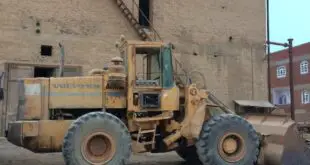Patagonia is a well-loved outdoor clothing brand, making things from jackets, boots, gloves, and many more. However, Patagonia also has its share of controversies, making many think if Patagonia is a brand worthy of support. Is Patagonia a good brand?
Patagonia is generally a good brand. This is because it is transparent where they source their products, and 87% of their products are recyclable. Patagonia also does not subscribe to fast fashion but produces long-lasting clothing. Patagonia also does better in sourcing fair-trade materials and paying fair wages than other brands.
In this article, we explore if Patagonia is a good brand by first understanding the brand and then looking at its sustainability practices.
Then we look into how they treat their Labor and if they are animal cruelty-free. Ultimately, we also explore the bodies and standards that Patagonia adheres to, follows, and supports.
What Is Patagonia?
Patagonia is an American maker and retailer of outdoor clothing and equipment. It was founded in Ventura, California, in 1973. The company offers unisex products for seven major activities, such as trail running, climbing, and fly fishing. The company operates in 10+ countries and is contemporary to brands such as Columbia.
Patagonia is a maker and retailer of outdoor clothing and equipment. Patagonia had its start in 1973, founded by Yvon Chouinard. The company is based in Ventura, California. Patagonia is a worldwide company with operations in 10+ countries and operates factories and production facilities in 16 countries.
Chouinard started off Patagonia by making hand-forged mountain climbing gear in 1957 to support his rock climbing activities. He then partnered with Tom Frost in 1965 to improve the products.
This led to Patagonia opening its first retail shop in 1973 in Ventura, California. The company continues to grow, making athletic equipment, backpacks, sleeping bags, and outdoor gear. In 2012, Patagonia introduced camping food into its products.
You may see Patagonia offering products across seven major sports and categories. They include snow, mountain biking, trail running, fly fishing, kite surfing, and climbing. These categories are then broken into products for males and females.
This makes Patagonia different from sports brands such as Nike, UnderArmour, or Lululemon, which focus on more urban-based sports. Patagonia may compete with other outdoor brands such as The North Face, Columbia, or Jack Wolfskin.
Why Do People Love Patagonia?
Patagonia is well-loved by many due to its high-quality, long-lasting products. It also has a unique corporate structure, where 100% of the net profit is spent on environmental protection. Patagonia also tries to reduce the wastage of its products and seems to be active in social activism.
When you look at Patagonia’s mission statement, they are driven by four guiding principles:
- Build the best product
- Cause no unnecessary harm
- Use the business to protect nature
- Don’t be bound by convention
These principles eventually translated into policies and actions that made Patagonia special and loved by its fans.
High-Quality Products
Patagonia is known for its simple but high-quality products. Shoes are known to withstand hard use, while the jackets are made from high-quality wool that will keep you warm. In fact, it is not rare to see some Patagonia products such as jackets or boots being worn as hand-me-downs or even heirlooms.
Unique Corporate Structure
Patagonia also has a unique corporate structure that can be a business that actually protects nature. Instead of being a listed company that answers to greedy shareholders, Patagonia is a private entity with 100% ownership under Patagonia Trust and Holdfast Collective.
After reinvesting the profits into the business, the remaining funds are channeled into environmental projects and protection programs. This made Patagonia well supported by eco fighters.
Worn Wear Program
Patagonia also attempted to improve its sustainability by improving the life cycle of its product. It buys or collects back old Patagonia products and repairs or restores some of them to be resold back. Those that cannot be restored are recycled instead.
This Worn Wear program helps to prolong their products’ use, reducing the need to continue producing new products.
Commitment To The Environment
Patagonia also dedicated 1% of its yearly program to the environment, calling it the One Percent For The Planet initiative.
This commitment has been going on since 1985 and has contributed to many global environmental projects. Patagonia has donated over $89 million as a result of this commitment.
Compared to other outdoor product makers, Patagonia is also one of the most committed to the environment. They perform better in sustainability practices when compared to brands such as Columbia, Nike, The North Face, or Timberland.
Social Activism
Patagonia also does not shy away from taking political positions when required. Patagonia’s most memorable action was to stop advertising on Facebook and remove its presence from Instagram in July 2020.
Patagonia did this as a way to protest how Meta was not doing enough to stop hate speech on social media. This endeared the brand to social justice advocates.
Is Patagonia Sustainable?
In general, Patagonia may be much more sustainable than many fashions or apparel brands out there. Over 80+% of the materials, Patagonia uses to make its products are recyclable. Patagonia also sources 87% of its materials from fair trade merchants. Patagonia’s packaging is also made from recyclable plastics.
True to its mission statement, Patagonia truly attempts to do no harm to the environment in many ways. Patagonia tries to improve its sustainability in all aspects of its operations, such as in product, packaging, and also operations.
Product
Recycled Materials
Patagonia is a leader in this area, as over 87% of the materials used in its products are recycled materials. These include cotton, polyester, nylon, wool, and many more.
Some of these materials are recycled from very interesting materials. For example, in 1993, Patagonia made polyester from recycled plastic bottles. A lot of Patagonia’s wool, cotton, and spandex supply comes from pre-consumer factory floor scraps.
Fair-Trade Materials
Patagonia also sources its materials from fair-trade merchants. This means Patagonia pays more for these products in exchange for the merchants using part of the higher income to improve workers’ conditions and pay them a living wage.
As a result, Patagonia actively promotes dignified work and responsible entrepreneurship. It also pushes against labor exploitation by suppliers that underpay workers.
Encourages Pre-Used Markets
Patagonia is an interesting company that discourages its customers from overbuying its products.
This is done by first producing products that are not trendy and may be worn for years without looking out of date. This prevents Patagonia from becoming a fast-fashion brand and reduces the pressure to buy to ‘keep’ up with trends. Patagonia also does not participate in Black Friday sales.
Secondly, Patagonia also actively encourages its pre-used market development, helping users resell their old Patagonia gear. Patagonia also runs the Worn Wear program, where they actively recollect their old clothes and repair and restore them to be resold at a lower price.
Packaging
Patagonia actively tries to improve its packaging by making them sustainable in two major ways:
Recyclable Packaging Materials
Patagonia actively recycles its packaging materials. For example, Patagonia uses many polybags to protect its shipments. These polybags are then recycled into plastic lumber through companies such as TREX.
By 2020, all their polybags are now made from 100% recycled plastic. These plastics are also Global Recycled Standard (GRS) certified.
Actively Encouraging Recycling
Patagonia also encourages its customers to recycle plastic bags used to package their products. This is done through active campaigns, placing reminders in product packaging, and their media space.
Operations
Patagonia currently produces its products in over 16 countries worldwide. They are transparent about this, with a page on their website detailing where they do business.
Carbon emissions
Patagonia attempts to reduce CO2 emissions by performing a lot of recycling operations. This helps them to avoid CO2 release from producing raw materials by as much as 80%.
Aside from that, Patagonia also attempts to use renewable energy sources. In the US, 100% of the energy used in Patagonia’s operations is renewable, while globally, the figure currently stands at 76%.
Some of their production processes are also done with less energy-intensive processes. For example, the Advanced Denim Technology they pioneered helps Patagonia to dye their denim using less energy. By saving up to 50% energy, it also reduces 25% CO2 emissions.
Chemical Consumption
Patagonia also actively tries to reduce chemical use in its productions. This was done by using chemicals recommended by the Green Chemistry and Commerce Council during the production of their products.
Patagonia also ensures that the materials they source do not use harmful chemicals. This is done using 100% organic cotton and systems to trace the origins of products such as Bluesign.
Water Consumption
Patagonia also tries to reduce water consumption during production. This is done by first recycling materials instead of producing them raw. This alone helped Patagonia reduce water consumption immensely.
Patagonia also uses technology that helps reduce water use. For example, their Advanced Denim Technology uses 84% less water than regular denim dyeing.
Does Patagonia Treats Its Employees Well?
Patagonia generally treats its workers and partners well and is improving in providing a fair wage to their workers. The company also seems to have a good review over at Glassdoor. It is well recommended for executives to work in. Patagonia also has a fair policy with its partners.
Workers
Workers are people helping to produce products for Patagonia, such as assembly line workers and product delivery people. Patagonia sources its materials from fair-trade merchants, meaning that these workers are likely to be working in safer conditions and receiving better pay.
Patagonia may be recognized as one of the best performers in how they treat workers, with 39% of their worldwide workers receiving a living wage. 39% may not sound like a great achievement, but when you compare it with the average figure of 2% from the Fashion Revolution, you can see Patagonia really worked hard in this area.
Executives
Executives are people who help manage the company’s operations, such as managers, retail assistants, or procurement officers.
When reviewing the feedback for Patagonia at Glassdoor, it seems that most executives are giving the company positive feedback, with 86% of the executives recommending people to come work for the company.
The positive feedback ranges from good work culture, a strong benefits package, and supportive colleagues.
Partners
Partners are third-party entities that work with Patagonia in various capacities – as manufacturers, raw materials suppliers, or more.
These are separate entities, so Patagonia may not be able to directly intervene in the daily operations of these partners.
As a result, Patagonia made them follow a strict code of conduct called the Supply Chain Environmental Responsibility Program. Patagonia also actively monitors and investigates any claims of their partners breaching policies or mistreating workers.
For example, when allegations of labor mistreatment happened in Patagonia’s partner plants in Taiwan, Patagonia actively investigated and cooperated fully with the authorities. It also shared its findings and actions openly.
Does Patagonia Harm Animals?
Patagonia can be said to be animal cruelty-free now, although they were not in the past. They source wool, feathers, and downs from sustainable and non-cruel suppliers. Patagonia also does not use angora, real fur, or any skins from exotic animal skin.
Patagonia has made huge strides in this area and is now a likely animal cruelty-free brand. This is because they do not use angora, fur, or skins from exotic animals. The wool is also cruelty-free.
You may notice Patagonia using recyclable polyurethane for leather, while some jackets may also have synthetic, recyclable wool. These materials reduce demands from the animals, reducing animal harm.
Patagonia, however, was caught in a controversy in 2012. The UK animal activist group Four Paws revealed that Patagonia sources its feathers from live-plucked animals and downs from force-fed geese.
Patagonia was quick to respond, denying the live-plucked allegation. However, they indicate that the downs were from geese in the Foie-Gras production. Since it is normal for foie gras geese to be force-fed, the allegation may be true.
However, Patagonia has since sourced its downs and feathers from animal cruelty sources. Currently, their supplies come from sources that are certified by Responsible Downs Standard.
However, Patagonia has not published any policy on animal cruelty, meaning that this is an area Patagonia can think about improving.
What Sustainability Standards And Bodies Are Patagonia Part Of?
Patagonia strongly advocates environmental and sustainability protection, which means they are part of many similar groups. Patagonia also subscribes to standards set by many regulatory bodies as well. Examples include Responsible Downs Standard, Fair Labor Association, Fashion Revolution, and many more.
The following list shows the sustainability standards and bodies that Patagonia has declared to be part of. The list is non-exhaustive, as Patagonia may add more to it in the future:
Fair Labor Association (FLA)
Patagonia is an accredited member of the FLA. FLA is a non-profit organization that is a collaborative endeavor between corporations, institutions, and groups from civil society. According to its own statement, it aims to encourage adherence to national and international labor regulations.
Responsible Downs Standard (RDS)
The RDS ensures that the feathers and duvet used in padded products come from geese and ducks raised in accordance with animal welfare principles. Patagonia’s feathers and downs are certified by RDS.
Sustainable Apparel Coalition (SAC)
Patagonia is one of the founding members of the SAC. Its main contribution is the development of the Higg Index, which helps product manufacturers accurately determine sustainability throughout their supply chain.
Fashion Transparency Index
The Fashion Transparency Index looks at 250 of the world’s biggest fashion brands and ranks them. The ranks are based on how transparent they are about their policies, practices, and effects on human dignity and the environment in their operations and supply chains. Patagonia had an overall rating of 51-60% in 2021.
Textile Exchange
Textile exchange aims to drive the responsible growth of sustainable textiles across the textile value chain worldwide. It has developed many standards that help makers source sustainable textiles. Patagonia is a member of the Textile Exchange.
B Corp
B Corporation Certification is a certificate indicating a company has met high criteria of verifiable performance, accountability, and transparency on various issues. They may include employee pays, charitable contributions, supply chain procedures, and input materials. Patagonia became a B Corp in 2011.
Global Recycle Standard (GRS)
The GRS is a standard to use to track and verify the amount of recycled materials in a final product. Patagonia materials subscribe to the GRS.
The standard applies to the whole supply chain. It covers things like chemical content, labeling, social requirements, environmental principles, and the ability to track where something came from.
Green Chemistry And Commerce Council (3C)
The 3C is a forum for businesses to collaborate and speed up the use of green chemistry across industries and supply chains. Patagonia is a member of the 3C.
Members of GC3 are leaders and pioneers in green chemistry, designing and making chemicals, materials, and products that are safe for the environment.
Bluesign
The Bluesign system aims to make textile production more sustainable by removing harmful substances at every supply chain step. Bluesign system also tests and approves chemicals, materials, and products that are safe for the environment. Patagonia is a partner in the Bluesign systems.
Is Patagonia Involved In Bodies Promoting Sustainability?
Aside from being in bodies that help ensure sustainable products, Patagonia also uses its profits to support bodies that promote sustainability and environmental protection. These include Outdoor Afro, Urban Harvest, Plastic Free Foundation, National Forest Foundation, and more.
Patagonia has committed 1% of its yearly sales to be donated in support of sustainability and environmental protection bodies. As such, Patagonia is a very active sponsor, contributing to the activities and programs of these non-profits.
The following list shows the sustainability bodies that Patagonia has worked with or is working with. The list is non-exhaustive, as Patagonia may add more to it in the future.
Suppose you are interested in supporting these bodies. In that case, Patagonia has a page where they help connect you to these bodies called the Patagonia Action Works.
Outdoor Afro
Outdoor Afro is a non-profit that serves to help inspire Black communities to explore and be part of nature. The body sponsors and organizes tours, walks, and glamping sessions to achieve its goals.
Urban Harvest STL
Urban Harvest STL grows healthy food on a network of urban farms in the middle of St. Louis. The harvest is then mostly given out to non-profit partners who help people with little to no access to nutritious food. Urban Harvest STL also teaches people in the area about these efforts and gets them involved.
City Kids Wilderness Project
The City Kids Wilderness Project is a non-profit organization. It aims to provide DC kids life-enriching experiences that can improve their lives, families, and the whole community’s lives. It organizes and sponsors many countryside tours, walks, and outdoor activities.
Plastic Free Foundation
Plastic Free Foundation is an Australian-based non-profit advocating the reduction of single-use plastics and eventually removing plastics. It is the main creator of the Plastic Free July campaign.
National Forest Foundation
The National Forest Foundation is the non-profit arm of the United States Forest Service. It works to help the American public to feel connected to their National Forests, which are the most important part of America’s public lands.
One Tree Planted
One Tree Planted is a non-profit aiming to plant trees worldwide. Since its inception, it has planted over 23.5 million trees worldwide. It pools donations and plats trees at selected locations, often at $1 per tree.
California State Parks Foundation (CSPF)
The CSPF is an independent, member-supported non-profit body. It aims to protect, improve and grow California’s state parks. It does this by mobilizing a diverse network of Californians across all communities.
What Are Some Of The Controversies Involving Patagonia?
Patagonia’s controversy tends to relate to its production, labor conditions, and occasional social activism. Most of the issues were well explained, and Patagonia was transparent enough to share its findings and actions with the public.
Patagonia has endured some controversies through the years. However, unlike Lululemon, it does not try to court controversy to stay in the public’s attention.
You may like this article: Why Lululemon is Bad
Animal Cruelty
In 2012, Patagonia was accused by Four Paws, a UK animal rights body that uses feathers and downs from live-plucked animals and force-fed geese. Patagonia has since improved and sources its feathers and downs from suppliers with the Responsible Downs Standard.
Labor Exploitation
Reports emerged in 2011 that Patagonia’s supply chain involved the usage of exploited labor force. Some of their production partners have resorted to employing laborers that were underpaid and borderline indentured servants.
Patagonia immediately investigated the claims, collaborated with the US Department of Labor, and was transparent with the process. They have since clamped down on such practices and whittled down their partners from 108 to 75 to better monitor them.
Perfluorinated Chemicals
In 2015, Greenpeace accused Patagonia and several other outdoor clothing makers of using perfluorinated chemicals (PFCs) in their gear. PFCs are petroleum-based chemicals, and are often used to waterproof clothing and gears.
Patagonia issued a response, noting that they understood the issues of PFCs and are using it as a ‘temporary solution.’ Patagonia has since invested $1 million in a Swiss startup to develop alternative waterproofing technology that could one day replace PFC.
Vote The A**holes Out
Patagonia is a company that is not shy from social activism, particularly when it involves the environment. In 2020, Patagonia stitched a tag to some of their shorts with the words ‘Vote the A**holes Out.’
Patagonia has further explained that the message is aimed at encouraging their customers to go and vote out irresponsible politicians who failed to protect the environment. This may refer to the series of fires that burned away hundreds of acres of West Coast forests.
Some mistake this as Patagonia taking an indirect criticism of Trump, but this has been explicitly denied by Patagonia.
Against Hate Speech
Patagonia took up the calls from the campaign ‘Stop Hate For Profit,’ a group of social activist groups. This campaign calls for bodies and individuals to remove their presence from Facebook and Instagram as a way to protest against Meta for failing to prevent hate speech on their platforms.
Patagonia officially shut itself off Facebook and Instagram in July 2020. The movement is also joined by other outdoor brands such as The North Face, Recreational Equipment, and REI.
 Being Human
Being Human




